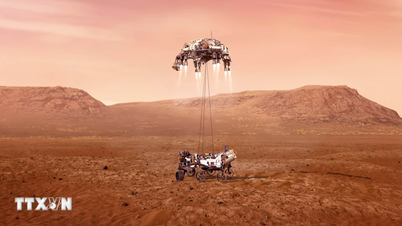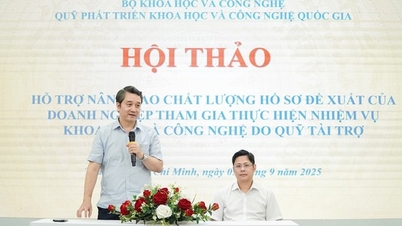The outermost corona of the Sun's atmosphere is thousands of times hotter than the star's surface, possibly due to weak but steady ripples that help transfer energy.

The corona is the outermost layer of the Sun's atmosphere. Photo: Popular Science
The surface of the Sun, the photosphere, is about 5,500 degrees Celsius. But even farther from the core, the outermost layer of the Sun’s atmosphere, called the corona, is much hotter, often reaching temperatures of up to 40 million degrees Celsius, according to NASA. The corona, made of hot ionized gas called plasma, is also where extreme space weather events like solar flares originate. But until now, researchers weren’t sure why the corona is so hot.
In a study published September 12 in the journal Nature Communications , scientists studied a common solar-related disturbance called a low-amplitude non-decaying torsional oscillation. This is a variation in the coronal magnetic arc, a dome-shaped structure of plasma that begins in the photosphere and extends into the corona. These waves are relatively weak, but do not lose strength over many cycles of the disturbance. As such, they can provide a large amount of energy to the corona over time.
The team focused on how the waves spread out up and down, left and right, or at any angle, a characteristic called polarization. Being able to analyze the 3D geometry of a wave can reveal its origin and the energy it contains. But scientists previously lacked a way to examine the wave from multiple angles and detect polarization.
Valery Nakariakov, a solar physicist at the University of Warwick in Coventry, England, and his colleagues used data from the European Space Agency’s Solar Orbiter and NASA’s Solar Dynamics Observatory to analyze the corona from multiple locations. They found that nearly all of the waves were vibrating in the same direction. The finding suggests that energy from the surface of the Sun can reach the corona and heat it. According to Nakariakov, the results provide important information to answer the long-standing question of what heats the Sun’s corona.
An Khang (According to Space )
Source link



![[Photo] Many people directly experience beloved Uncle Ho and the General Secretaries](https://vphoto.vietnam.vn/thumb/1200x675/vietnam/resource/IMAGE/2025/9/6/2f4d9a1c1ef14be3933dbef3cd5403f6)
![[Photo] 80th Anniversary of the General Staff of the Vietnam People's Army](https://vphoto.vietnam.vn/thumb/1200x675/vietnam/resource/IMAGE/2025/9/6/49153e2a2ffc43b7b5b5396399b0c471)


![[Photo] General Secretary To Lam attends the 80th Anniversary of the General Staff of the Vietnam People's Army](https://vphoto.vietnam.vn/thumb/1200x675/vietnam/resource/IMAGE/2025/9/6/126697ab3e904fd68a2a510323659767)
![[Photo] Rescuing people in flooded areas at the foot of Prenn Pass overnight](https://vphoto.vietnam.vn/thumb/1200x675/vietnam/resource/IMAGE/2025/9/6/19095b01eb844de98c406cc135b2f96c)












![[INFOGRAPHIC] Asteroid the size of a jet plane flies past Earth](https://vphoto.vietnam.vn/thumb/402x226/vietnam/resource/IMAGE/2025/9/6/f1e25952ab0242c9a8e156526caa69d4)

















































































Comment (0)